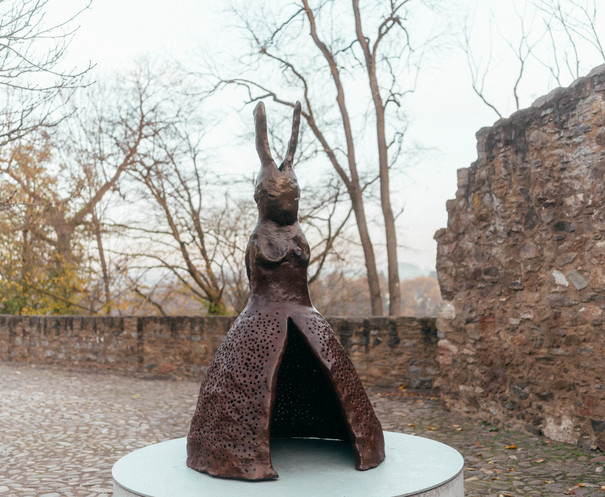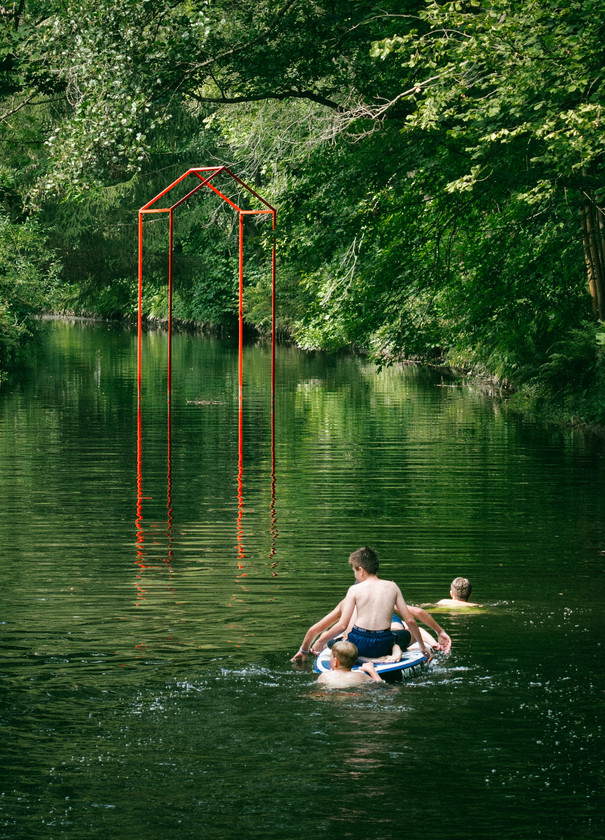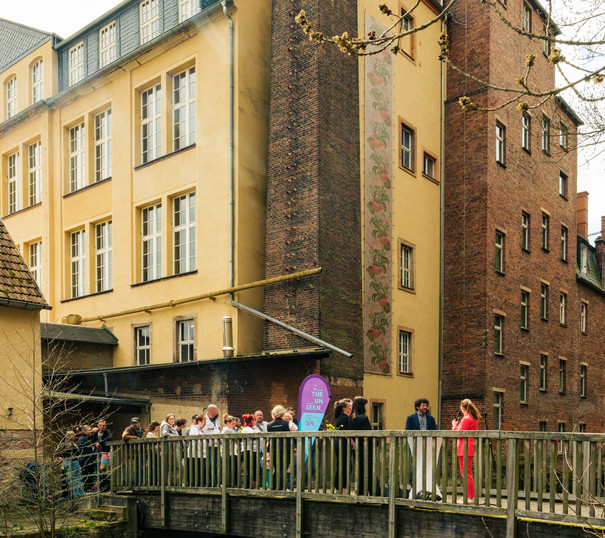The tour leads from the magnificent baroque Lichtenwalde Palace to a former textile industry site - along the Zschopau river and past three sculptures on the PURPLE PATH art and sculpture trail. This open-air gallery brings contemporary art to life in public spaces: it stretches across Chemnitz and the Capital of Culture region and brings the works into a dialogue with the history of their respective locations.
The route is around 4 kilometres long and is easy to explore on foot. The starting point can be reached by bus line 640 (bus stop Lichtenwalde Gh Bienenstock). From the destination, the C15 light rail line (Braunsdorf-Lichtenwalde stop) takes you comfortably back towards Chemnitz.
Baroque castle and Asiatica
The tour begins in the courtyard of the baroque Lichtenwalde Palace complex. There you will be greeted by the artwork "Usagi Greeting" by Leiko Ikemura. The bronze sculpture depicts the figure of a hare and aesthetically combines Buddhist and Christian traditions. The special shape of the sculpture has an opening on the inside through which a miniature firmament of light is created. The placement of the figure in Lichtenwalde Castle is a reference to the collections of Asian artefacts housed in the Schatzkammer Museum. The exhibition brings together art and ritual artefacts from Nepal, Tibet, China and Japan.
Opening times (courtyard and museum): Tue-Sun: 10 am - 6 pm (last admission at 5 pm)

Follow the river
The next stop is at the southern end of the Braunsdorf district, directly on the Mühlengraben. From the baroque castle, hiking trails lead along the Zschopau through a varied landscape with charming views. If you prefer a longer route, you can take a detour on the south-western side of the baroque garden via the Teufelsschlucht gorge and then follow the hiking trail further south through the Zschopau valley. Alternatively, it is also possible to simply follow the course of the river in the opposite direction. If you are looking for a place to stop for refreshments, you can change sides of the river via the Braunsdorf weir and explore the Braunsdorf district. From there, the route continues south along the village road to the Webermühle mill and on to the next destination.
After around 3 to 4 kilometres, you will reach the next work of art: "My Floating Home" by Karolin Schwab. The sculpture in the form of a red house outline rises out of the water of the mill race. The interplay with the flowing water creates constantly changing images and invites visitors to explore the question of home.

Textile history in motion
The historic Braunsdorf show weaving mill (Historische Schauweberei Braunsdorf) is just a few minutes away. The listed ensemble is one of the few remaining production sites of the once important Saxon textile industry. Today, the building houses, among other things, a museum with original, still functioning machines.
Opening times: Wed: 4 - 8 p.m.; Thu-Sun: 10 a.m. - 4 p.m
For the rear facade of the museum, Anja Schwörer has created the mural "Mapping Patterns: Industrial Flora" - a large-scale work of art consisting of coloured squares arranged in a row. The work illustrates the technology and history of Jacquard weaving and refers to fabric structures, woven ornaments and the functioning of looms, which are documented, researched and demonstrated on historical machines in the show weaving mill.
